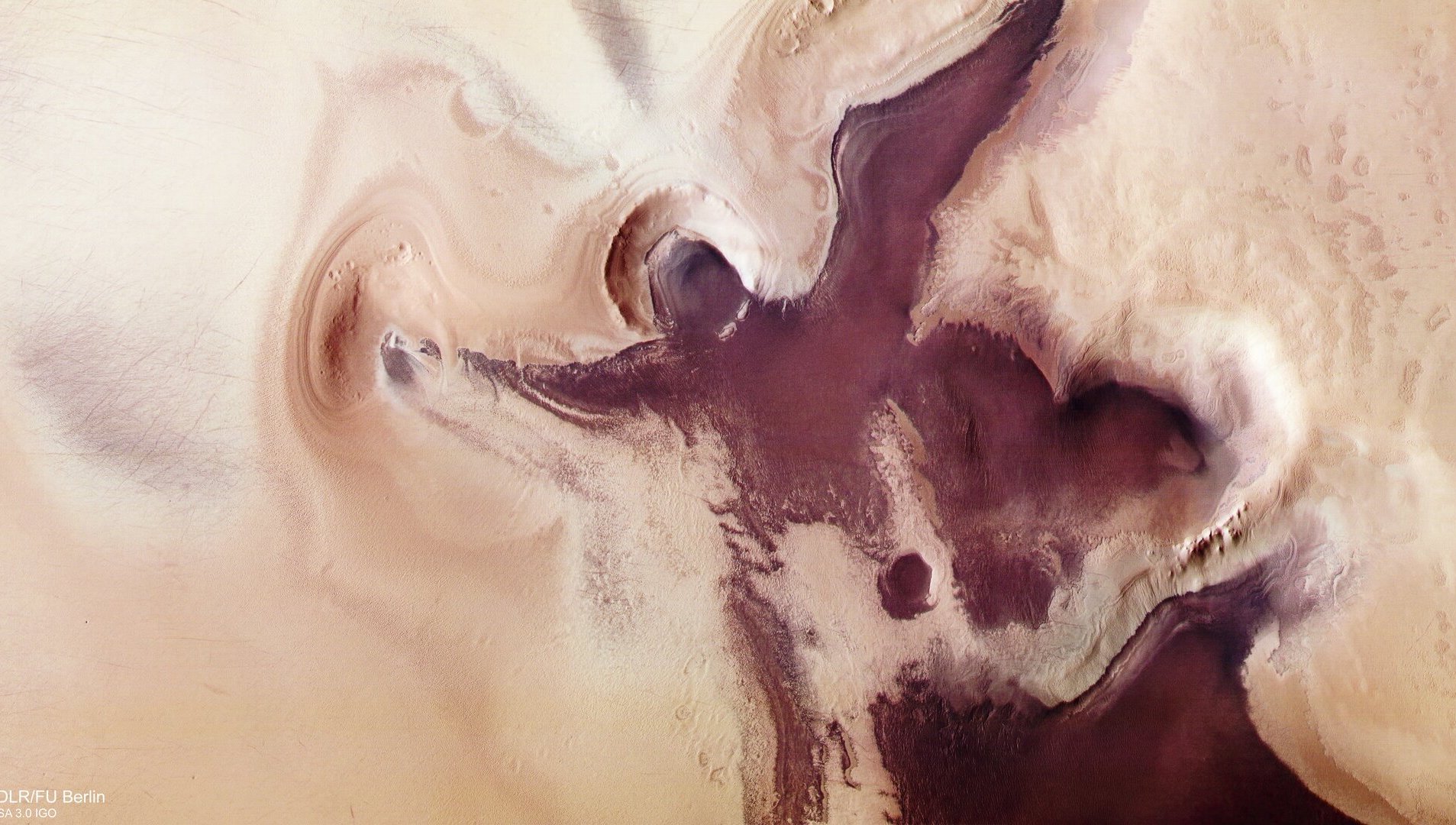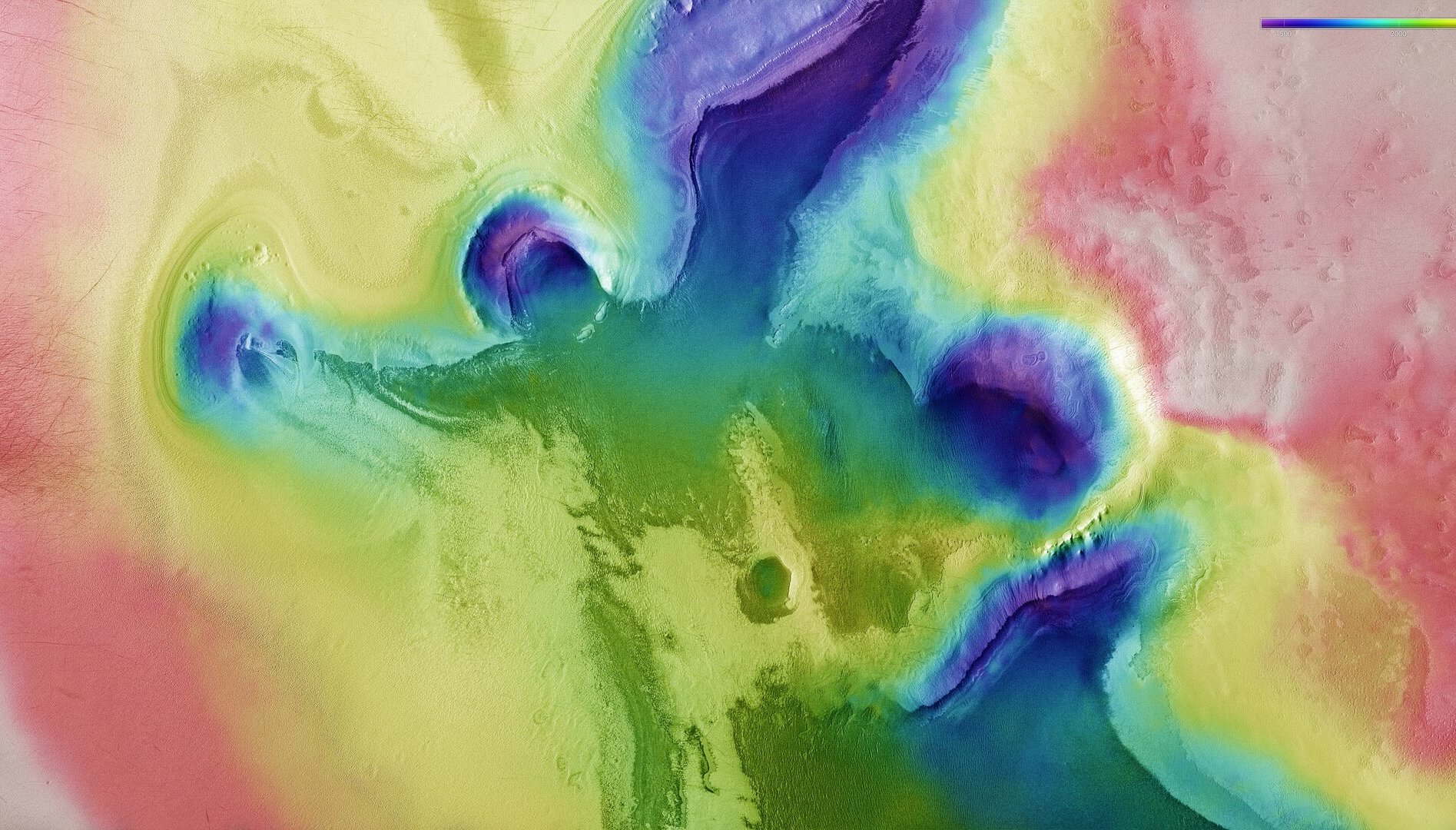Angel, devil and blood-red heart appear at Martian south pole
It's summer in Mars' southern hemisphere, and strange structures are crawling out of the ice.

It's summer at the south pole of Mars, and the angels and devils are coming out to play. You can see them both in a stunning new image of the recently thawed pole, taken by the European Space Agency (ESA).
The devils, it should be said, are made of dust. Just like on Earth, Martian dust devils form when a pocket of warm air suddenly rises through a column of cool air, creating a spinning updraft. (Unlike on Earth, these dusty cyclones can tower 6 miles, or 10 kilometers, high). You can see the scratchy-scratchy tracks of one such cyclone in the dark region to the far left of this image.
And as for the angel? For an explanation, we'll have to turn to the heavens. Take a close look at the "halo" around the angel's head, and you'll notice the steep, sloping walls of an impact crater. According to a statement from the ESA, this ethereal feature is the product of a meteorite collision that dug deep into the Red Planet's crust, building a crater and revealing the layers of ancient sediment below.

Related: The 12 strangest objects in the universe
Those old layers take on a dark-red hue and are visible in this image all through the angel's body as well as the heart-shaped structure below its right wing. What this reddish stuff is made of, scientists aren't sure. These strange, dark deposits are found all over Mars and are thought to be the result of ancient volcanic activity, long buried below the Martian crust, according to the ESA. Erosion, asteroid impacts and scathing winds have slowly brought these mysterious red scars to the surface.
This image was captured by the ESA's Mars Express spacecraft, which has been orbiting the Red Planet since 2004. These mysterious structures near the Martian south pole are visible now only because of the season; normally, the whole area would be covered in a 250-mile-wide (400 km) ice cap. Be thankful you don't have to shovel your car out of that.
Originally published on Live Science.
Sign up for the Live Science daily newsletter now
Get the world’s most fascinating discoveries delivered straight to your inbox.

Brandon is the space/physics editor at Live Science. His writing has appeared in The Washington Post, Reader's Digest, CBS.com, the Richard Dawkins Foundation website and other outlets. He holds a bachelor's degree in creative writing from the University of Arizona, with minors in journalism and media arts. He enjoys writing most about space, geoscience and the mysteries of the universe.









